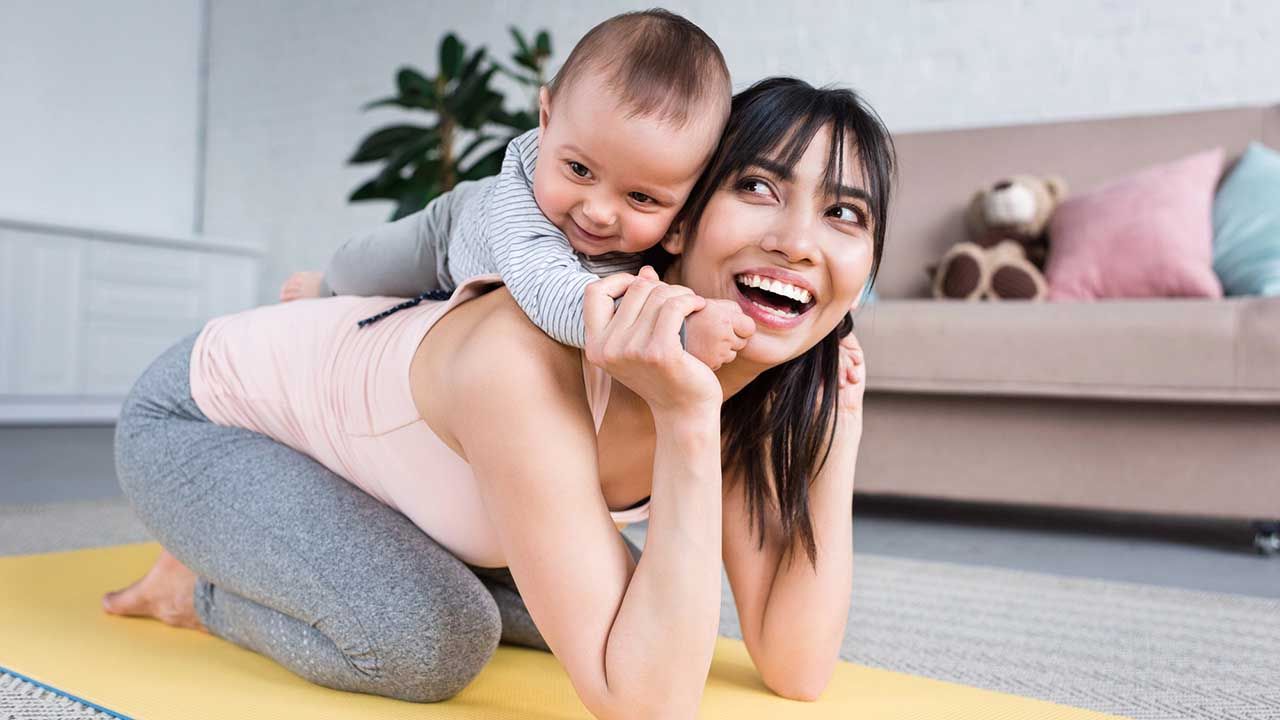Getting Kids Into Yoga

Yoga helps us learn many great skills on our mat, with lessons that can be carried as a 'toolbox' into our everyday life. Here's how you can help children get involved with yoga so they can tap into these benefits as they grow.
What can yoga teach kids?
Whenever we practice yoga on our mat, we are training our body and mind for qualities that we can use at any time, anywhere - not just on the mat!
The physicality of poses helps with strength, good posture, balance and flexibility. Mentally we can work on resilience, courage, determination, focus and self-awareness among many other things.
In the modern, fast-paced, overstimulating world that we live in, yoga also helps teach skills to help us block out the everyday noise which can help kids to cope better with stress and anxiety, to refocus and feel grounded again. ,
These are skills that aren't often taught to children in the classroom unless we actively pursue it, so by introducing them to yoga you're giving them a wonderful gift they will be able to use for the rest of their lives.
Make it relevant to their age
Babies - At this stage of childhood, yoga is more about their interactions with you so you can both use it as a bonding experience together. Even just having them nearby while you practice your own yoga is great for them to observe (once they start to crawl, they will likely start crawling all over you when you get down on your mat!).
Babies love mantra/sounding out, and can benefit from feeling you doing pranayama (breathing techniques) as you hold them close.
Young children - The aim at this age is to just have fun! 15-20 minute sessions are a good amount of time due to the attention span of young children, 30 minutes at most.
Many yoga poses are named after animals, use this to get them to play and pretend they are turning into that animal. If you feel comfortable doing it, weave it into a story - for example, 'Let's go to the jungle, how many animals can we see? Look over there, it's a monkey - let's try to copy what he looks like (Hanumanasana, Monkey Pose), in the corner over there I see a bear (Dancing Bear), let's climb this tree (pretend to ladder climb, then do Vrksasana, Tree Pose).
Don't be afraid to rename the poses to fit your storyline or their interests. Warrior II pose could just as easily be their favourite cartoon character standing on a surfboard or an ice princess firing snow from her front hand!
Introduce meditation and stillness but keep it very short and don't force it as this is an age where they often just want to keep moving! Aim for just 5-10 breaths in relaxation/Svasana to round off the practice.
Teens - This is an age where many kids can begin to lose self-awareness and confidence, which is why yoga can be so beneficial during the teenage years. They can start to get an understanding of what poses make them feel strong, what poses they enjoy and what feels good for their body.
Full length yoga classes are typically around one and a half hours which may still be a little long for this age unless they're really into yoga. Anywhere from 15 minutes to 45 minutes would likely be more appropriate for teens.
They may appreciate a more athletic approach to yoga so help them learn to do the sun salutation sequence (this gets repeated in most modern yoga classes in varying forms, so it will help them feel more comfortable in any yoga class they may try as they will be more familiar with it).
Short, guided meditations are good for body awareness and to help them find focus while learning to be in stillness.
Keep it fun
The more serious side of yoga can come later if they choose to follow it or if they show early interest in learning more. For these earlier years, simply aim for participation and when old enough, encourage them to just give things a go and to have fun.
Image / DepositPhotos









